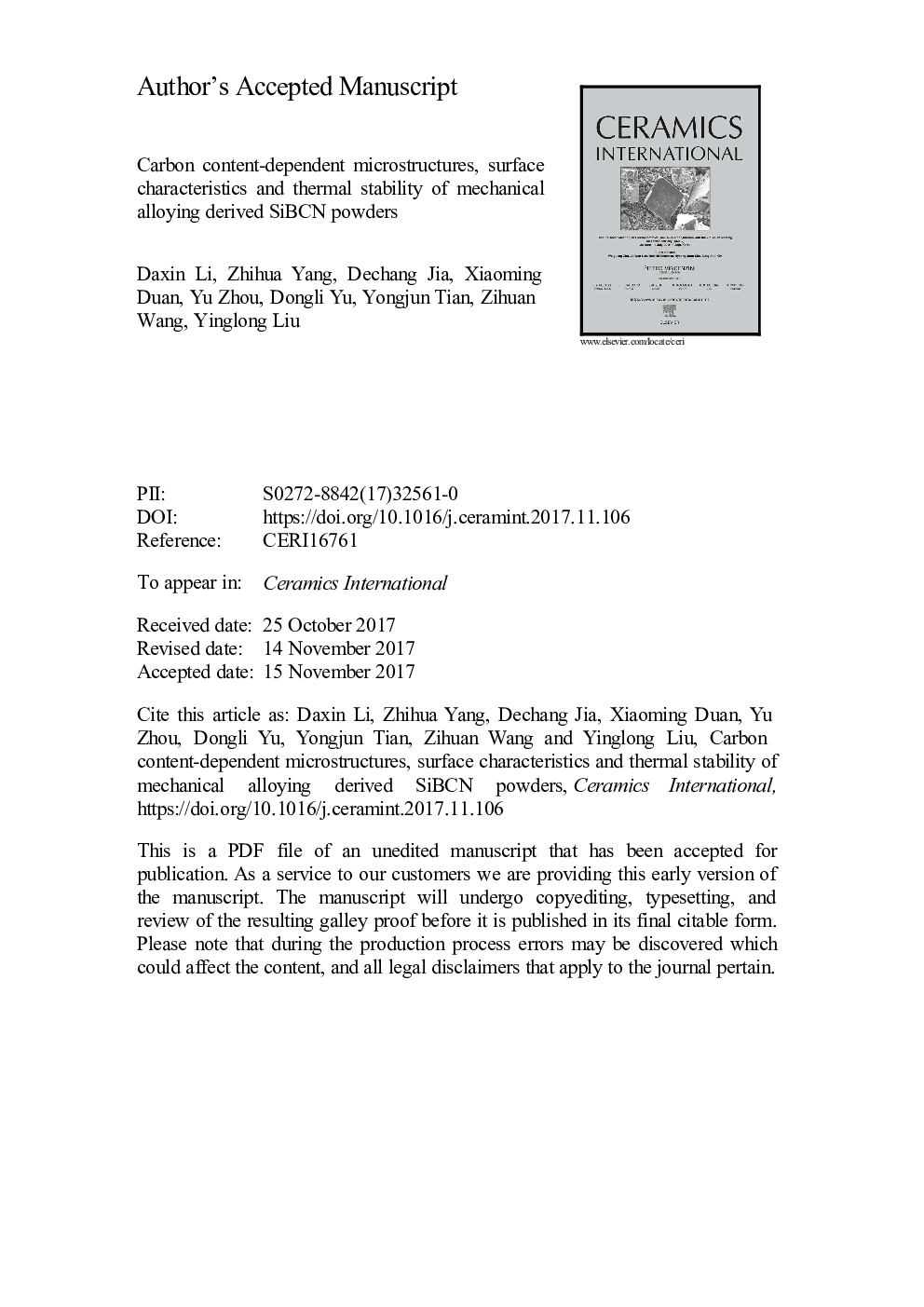| Article ID | Journal | Published Year | Pages | File Type |
|---|---|---|---|---|
| 7888071 | Ceramics International | 2018 | 29 Pages |
Abstract
Three types of SiBCN: carbon-lean, -moderate and -rich powders with the same Si/B/N mole ratio were subjected to high-energy ball milling to yield an amorphous structure. The effects of carbon content on microstructures, solid-state amorphization, surface characteristics and thermal stability of the as-milled powders were studied in detail. Results showed that the increases in carbon content can drive solid-state amorphization accompanied by strain-induced, crystallite refinement-induced and/or chemical composition-induced nucleation of nano-SiC from an amorphous body. The specific surface area increases as carbon content increases. The amorphous networks of Si-C, C-B/C-C, C-N, B-N and C-B-N bonds that compose the amorphous nature, but the species and contents of the chemical bonds are carbon content-dependent. Carbon-moderate powders possess satisfying thermal stability while carbon-rich ones perform the worst. Mechanical alloying derived SiBCN powders have outstanding oxidation resistance below 800 °C; however only carbon-moderate powders show desirable anti-oxidation ability at higher temperatures. Thus, mechanical alloying of SiBCN appears a suitable technique for developing amorphous matrix materials for practical applications.
Related Topics
Physical Sciences and Engineering
Materials Science
Ceramics and Composites
Authors
Daxin Li, Zhihua Yang, Dechang Jia, Xiaoming Duan, Yu Zhou, Dongli Yu, Yongjun Tian, Zihuan Wang, Yinglong Liu,
